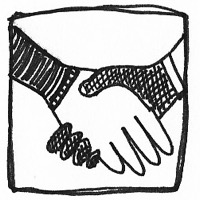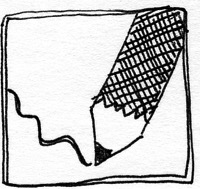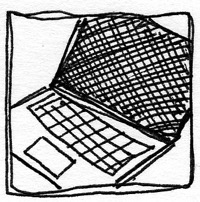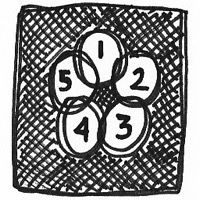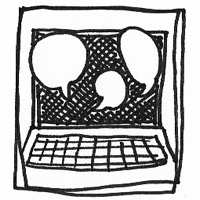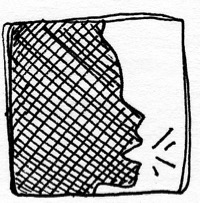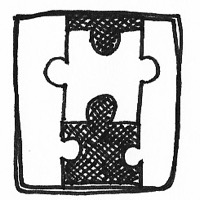When you encountered the image "cards" on our landing page, what did you think of? At the outset, this article uses this array of images, assembled to be reminiscent of a Memory game, as a metaphor for the pedagogical project we discuss. While reading this webtext, our readers should consider: How do we interact, or play, with the rhetorical canon of Memory with our online technical writing students? Regarding the concept of Memory, what tools, activities, and media are students interacting with in the course, and how can those elements best influence the projects they create as members of the classroom community and as future technical communicators? Lastly, how can reflection on these elements help them gain entrance into the digital communities in which they live, socialize, and work?
When we ask students as a classroom community to engage with the canon of Memory, we define the canon as a critical reflection of the skills students learn when composing multimodally. Perhaps more importantly, this reflection includes students discussing the connection or transfer of those skills across the projects created in the course and for future projects they might create in the workplace. While the canon of Memory was thought of in ancient rhetoric as not only committing an argument to memory but also as speaking eloquently on a topic based on the speaker's prior knowledge, we wanted to extend the canon for the 21st century. Specifically, we ask students to recall and reflect upon the decisions made during the composing process when they both revise current projects and compose future ones, both in and outside of the classroom context for professional circulation. We typically introduce students to our definition of Memory and then prompt them to reflect on their work after completing each course project. Toward the end of the course, students reflect on their overall work in the course, discussing how the curriculum and interactions with peers and the instructor have guided them in learning the course outcomes and how they can be beneficial to their futures. Thus, our use of Memory is twofold: We hope not only to guide students toward a better understanding of the composing skills they develop in the class but also to foster course community and entrance into a larger technical communication community in the workplace.
The curriculum encourages students to become multiliterate advocates and citizens for the 21st century and prompts online instructors of technical communication to become advocates who enshrine the principles of community as central to the design of their courses. We train our instructors to design their courses to incorporate the rhetorical canons as outcomes of the course, where students write metacognitive reflections for various low-stakes and major assignments, focusing on "Delivery" and "Memory." This practice responds to what James Porter (2009), following Kathleen Welch (1999), indicated is a dismissiveness of community when writing instruction privileges "textual formalism" via the first three outcomes of "Invention," "Arrangement," and "Style." Informing our work also is scholarship by Claire Lauer (2013), Andrew Bourelle, Tiffany Bourelle, and Natasha Jones (2015), Laura Ewing (2013), and the authors featured in the 2012 special issue of Technical Communication Quarterly on multimodal composition (Katz & Odell, 2012; see especially Ball, 2012; Manion & Selfe, 2012). Concepts from Stewart Whittemore's (2015) Rhetorical Memory have also helped us to map the connection between the learning via "Memory" that our lower-division eTC students enact and the practices of working technical communicators, for whom Memory is a "means of invention" (p. 32), which is a role Memory has played historically. As used in our multimodal curriculum, memory facilitates inventive, synthesizing acts, such as in the static-text or rich-media reflections students compose (some of which we will discuss in this webtext).
When reading this webtext, we ask you to do a similar reflection to what we ask of our students: We encourage you to problematize what you think you know about the canon of Memory and to question, engage, and reflect with the contents within this webtext as you read and as you design your own online technical communication courses. The navigational buttons (on the left on widest screens; above on narrower screens) will take you through our webtext, wherein we share the practices of our university's online technical communication curriculum (Electronic Technical Communication or "eTC"). This webtext's design and message afford readers their own opportunities for metacognitive learning. Where some will see an absence of hypertextual flourish and encounter instead an apparent linearity that allows users to make meaning connectively across the pages and examples "in order," others will see an opportunity to navigate with an alinear approach, as a webtext's modality invites. Our readers, like students in our eTC course, will engage "Memory" and create meaning via text and moving and static images in different ways, with varied complexity and permanence.
Our students engage with course materials delivered online in a related way, as they make decisions, and thus meaning, through assignments, in-class community engagements, and metacognitive reflection in ways that alternatingly follow and resist assumptions of design and instructor intention. As the student-produced discussion board posts and video contents we include in this webtext convey, our eTC course's employment of the multivalent concept of Memory holds promise for those who seek a unifying strategy for community-creation in the multimodal online classroom.
